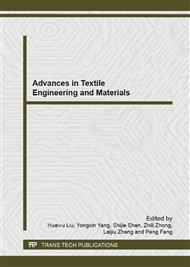p.770
p.775
p.780
p.785
p.791
p.796
p.800
p.804
p.809
Study on the Conditions of Plasma-Induced Graft Acrylic Acid on Polyethersulfone Substrates
Abstract:
The use of low-temperature plasmas to modify the surface of substrates and grafted acrylic acid is discussed. Their surface composition characterized by attenuated total reflectance fourier transform infrared (ATR-FTIR) spectra and water contact angle. The results of various techniques indicated that acrylic acid could be incorporated in the membrane surface. The plasma treatment time,plasma treatment power and grafting time effect on water contact angle. The water contact angle decreased from 67° for virgin PES to 11° for the plasma-induced and 0° for grafted AA.
Info:
Periodical:
Pages:
791-795
Citation:
Online since:
December 2012
Authors:
Keywords:
Price:
Сopyright:
© 2013 Trans Tech Publications Ltd. All Rights Reserved
Share:
Citation:


